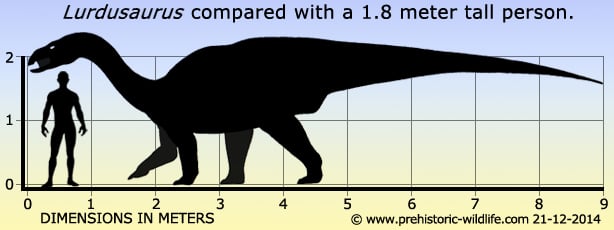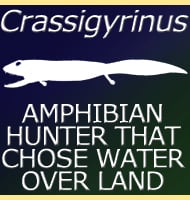In Depth
Lurdusaurus is a genus of ornithopod dinosaur that lived in North Africa during the Early Cretaceous, and one that helped reveal that some ornithopods at least were growing to large sizes. Lurdusaurus is noted for being approximately nine meters long featuring a neck that is longer than most other ornithopods of its kind and having a particularly robust skeleton which could be indicative of a heavy build in life. The hind feet however have no hard connections, which has led to speculation that the feet may have had extensive fleshy pads to support the weight. Alternative the heavy skeleton may have been to aid buoyancy for a more aquatic lifestyle, perhaps to traverse the extensive waterways that are known to have stretched across North Africa at this time. This might also be why the hind foot lacks overly developed weight bearing features since buoyancy from water would relieve stress on the feet. This however is only speculation, with no current fossil evidence to support this idea.
Coming from the Elhraz Formation, Lurdusaurus shared the same habitat as the better known Ouranosaurus. Principal predatory threats to Lurdusaurus came from the abelisaurid theropods Kryptops and Eocarcharia, and if they were not enough the giant crocodile Sarcosuchus is also known to have been in the waterways of North Africa at the same time.
Further Reading
- A massively-constructed iguanodont from Gadoufaoua, Lower Cretaceous of Niger. Annales de Pal�ontologie 85(1):85-96. - P. Taquet & D. A. Russell - 1999.










